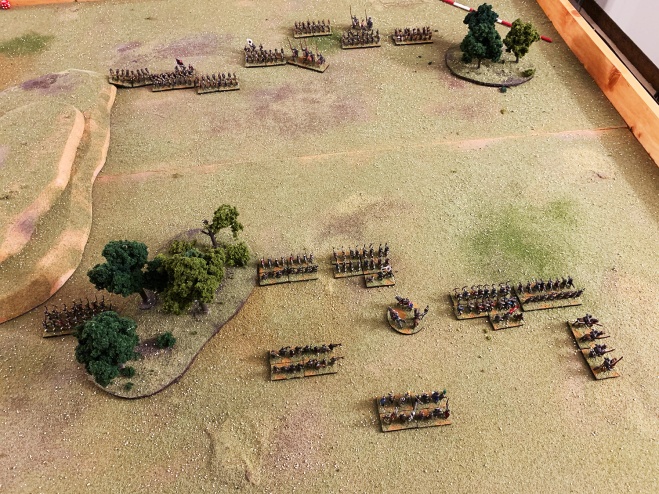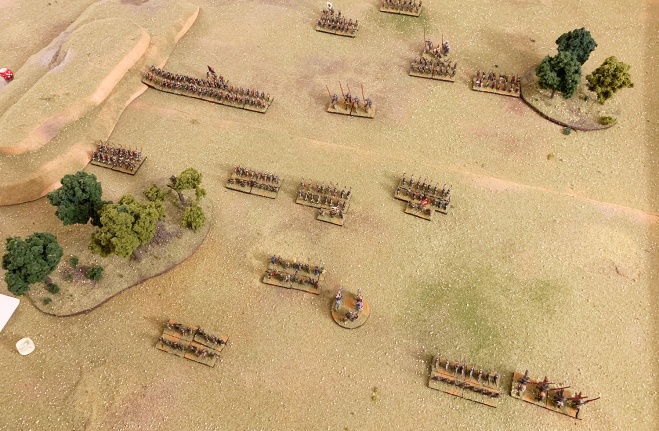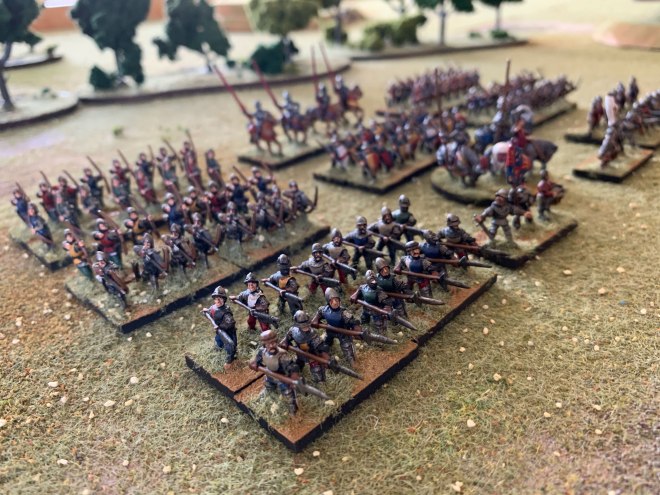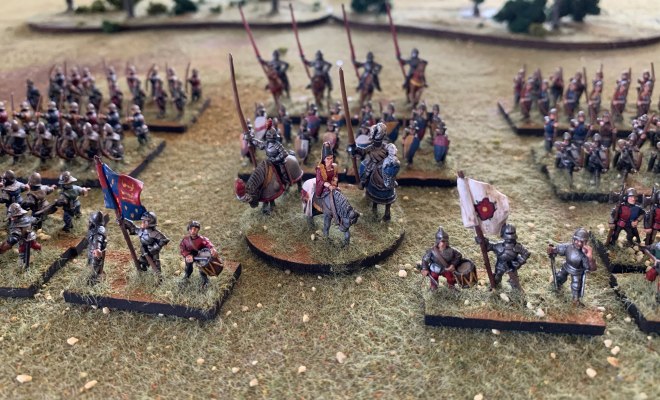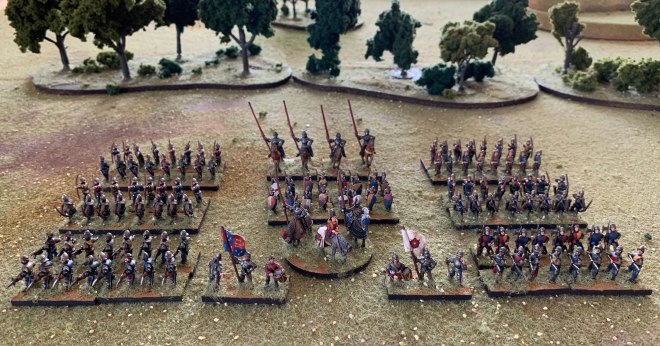This week I’ve spent my hobby time taking my freshly painted Wars of the Roses armies onto the battlefield as I learnt how to play Sword and Spear. This has been a long-anticipated game system for me to try after hearing about it on the Meeples and Miniatures podcast, and I’ve been wanting to get into some “ranks and flanks” historical gaming for some time.
I’ll spare the blow-by-blow account of the game, as I was really just trying to get to grips with the rules, rather than play out some tactically nuanced battle, but I’ll call out specific instances as I describe what I discovered.
The rules themselves are fairly simple to get to grips with – there are just a couple of core mechanics that are implemented in different ways across different phases of the game. Once I’d gone through a couple of rounds of activation, movement, shooting and melee I rarely had to look up any stats.
Activation follows a multi-step dice-pulling sequence, akin to Bolt Action. Each unit adds a dice to a bag, then seven are drawn at random, with the side having the most dice taking priority. The difference is, those dice are then rolled, and given to units with specific discipline ratings. It’s actually not too dissimilar to how units in Star Wars Legion are activated, however this seemed more intuitive.
The system also captures attrition in a more noticeable way than Bolt Action. There are times in Bolt Action when you don’t want to pull the first dice, which becomes increasingly difficult as you wear down your opponents units. In Sword and Spear, that never seems to be the case – having the initiative is always a good thing, and at one pivotal moment in the game, I could almost tangibly feel the breaking point when the Yorkists grip of balance slipped away.
Combat, both ranged and in melee is handled in the same way – each side rolls a number of dice and then compares them in cascading order, with armor being reflected with some simple modifiers. It’s quick and clean, and certainly works for hand-to-hand combat, but I feel it under-represents ranged fire – for instance there are no modifiers for firing at almost point-blank range.
I’m definitely going to play this more, and try some of the scenarios. I have some additional units to add for my WotR forces, and am seriously tempted to buy some more light cavalry and skirmishers. I also want to try the system with a different era, most likely some Biblical forces.

